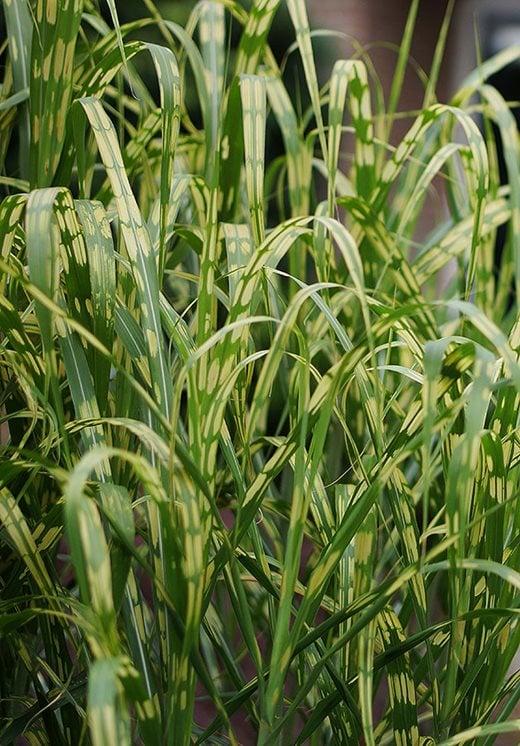There’s been a steady stream of new miscanthus introductions in recent years, mainly with the emphasis on neat growth, limited vigour, early flowering and suitability for small spaces. This one is the opposite, making a large and emphatic specimen.
 Miscanthus
Miscanthus ×
giganteus, elephant grass, is a plant we’re increasingly seeing in the countryside planted as a biofuel. Alligator ('Lottum') is the first banded variety, its tightly packed, bright yellow stripes lighting up the foliage.
It’s important to say, however, that although this is a tall plant, reaching 2-3m (6-10ft) in height, it’s not an invasive one. The situation is confused because some green-leaved plants wrongly sold as
Miscanthus ×
giganteus are impressively invasive, so plants under that name have a bad reputation.
There are three good ways to make the most of this dramatic yet well-behaved plant. Firstly, Alligator makes a superb specimen in a sunny border; add cannas, ricinus, dahlias and hedychiums in front to create a bold, tropical look. You can also use it as a colourful summer screen, with two or three wires strung horizontally for support. Finally, Alligator also makes an imposing specimen in a large patio container.
Alligator was discovered in 1999 by Dutch nurseryman Jozef Vergeldt, when he spotted one variegated plant amongst a crop of green-leaved plants on his nursery at Lottum, near the south east border with Germany. He built up stocks steadily, ensuring that it did not revert to plain green. Making about 2m (6½ft) of growth in one season, the individual leaves are unusually long and can reach 1m (3ft), each heavily banded in bright yellow. It’s rather like a super-sized version of
Miscanthus sinensis ‘Zebrinus’ which only reaches half the height. And there’s also the bonus of silvery flowerheads (plumes) in September.
Hardy to -23°C (
RHS hardiness rating H7), Alligator is exceptionally tough and needs little care – just cut the plant down to the ground in early spring and it will soon surge into growth. Just give it sun or partial shade it’s happy in most soils.
And the name Alligator? The tightly banded leaves are said to resemble alligator skin.
See also
*Please note, the contents of this blog reflect the views of its author, and do not constitute an official plant endorsement from the RHS.

